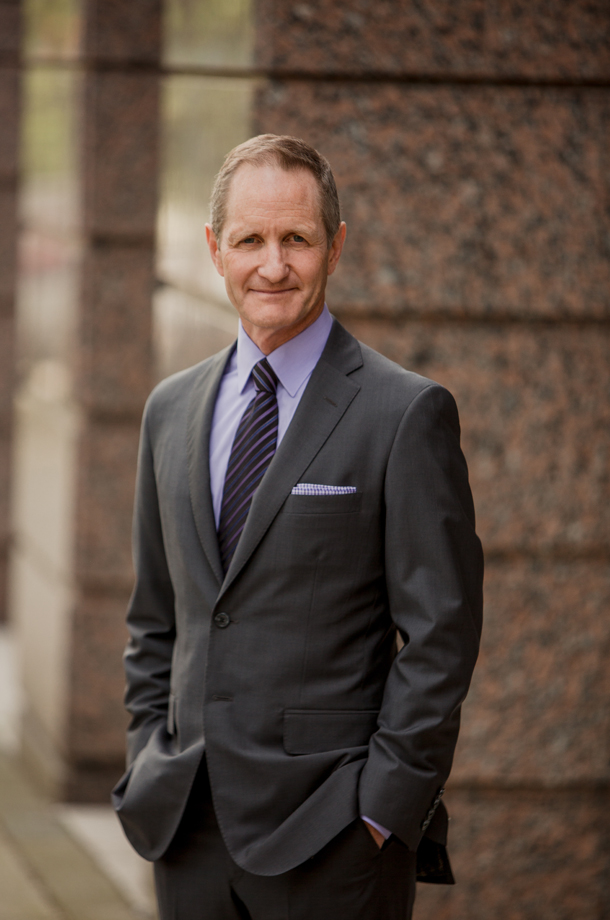A packed house attended NAIOP’s October breakfast to hear the A-list of local brokers provide their thoughts on the current investment market and where it is headed. Jeff Fleming, Vice President, Investments, GWL Realty Advisors, moderated the discussion, posing questions to the three-man panel of Avtar Bains (Colliers International), Jim Szabo (CB Richard Ellis) and Kevin Meikle (Cushman & Wakefield).
What is it about the Vancouver economy that attracts investors here?
Avtar spoke for the panel in noting that, in contrast to local, public or institutional investors who make investments based on global considerations, the real estate investor in Vancouver can focus on one or two assets at a time, looking at specific opportunities rather than investment choices on a worldwide level. In Vancouver (meaning, throughout this discussion, Greater Vancouver), the real estate investor is driven by continued restrained supply, and as a result can pick an asset of choice that will be sure to increase in value over the long term. If there is a fear relating to the economy, the fear is directed more towards the United States than to Vancouver.
What are the underlying fundamentals of the Vancouver market?
Each member of the panel noted a different strength of the Vancouver market. Avtar commented that the primary fundamental underlying our market actually relates to the region’s diversified economy. There is enough diversification to ensure stability – if one discipline declines, such as primary industry, that decline doesn’t directly affect other areas. Jim noted that in particular, the Vancouver market remains stable because of the relative scarcity of head offices located here; there is not the fluctuation that we see in places like Calgary when a head office shuts down or cuts back, flooding the market with excess office space. Kevin commented that Vancouver’s market strength lies in investors’ perception, recently heightened by the Olympic experience, that Vancouver has it all, even if that perception is more rosy than the underlying factors warrant.
Does the industrial market actually exist in Vancouver?
Jim noted that Class A industrial space in Vancouver is controlled by a small group of owners who are not selling their industrial space because the properties they hold are core to their businesses. As interest rates decrease and push cap rates lower, some industrial product may enter the market, but this will not be until mid-2011.
Where will the downtown market settle in terms of supply and demand?
The panel generally agreed that there is a need for more office space in downtown Vancouver. Jim noted that with no new office buildings coming onto the market until 2014 or 2015 at the earliest, there will be significant rent growth in the downtown core in the coming years. Jim believes that downtown Vancouver could handle two or three new office buildings. About half of the available sites downtown right now are owned by pension funds, while the other half is privately held. If the private owners are interested in constructing a new office building, Jim opined that in order to finance construction they will likely have to joint venture with pension funds.
Avtar noted that there is not much diversification of ownership in downtown Vancouver, commenting that five groups own the overwhelming majority of the top office buildings. Avtar noted that it is difficult to buy a building in Vancouver, and Kevin agreed, commenting that investors in Germany and Asia would love to be able to get into the downtown Vancouver market. Kevin commented that office owners will have to make difficult decisions in the months ahead – with their assets being so valuable, they may be tempted to sell.
What is supply/demand like in the suburban office market?
Jim noted that when looking at the downtown office market versus the suburban office market, there has been little discounting in suburban areas. While one would think that cap rates would be relatively high in suburban areas, this is simply not the case and the difference between downtown and suburban cap rates is not enough for an investor to warrant the risk. Jim predicted that there would be no significant office trades in 2011 and that our current situation will stay as is for the next 16 to 18 months. However, if cap rates get close to 5% with cranes in the air and new office buildings coming out of the ground, downtown owners may start to get nervous and be willing to sell. Kevin confirmed this lack of discount in the suburbs and pointed out that one of the reasons is the constrained office supply downtown as it forces buyers to the suburbs in search of product. Kevin also commented that younger generations like the vibrancy of downtown, noting that for investors with office buildings that are at or near Skytrain lines it will be much easier to sell those buildings as compared to office buildings where commuters have to drive to reach their destination.
Activity in 2010 was huge and it appears as though retail has been the dominant asset class. Why is that?
Avtar confirmed that retail has been the most prominent asset class in 2010 simply because there was product available to be purchased. Investors were culling their retail portfolios for various reasons, with an investor such as the Ontario Pension Board making the decision to sell certain retail assets instead of redeveloping those properties. Avtar pointed out that sellers were creating the 2010 liquidity, and with Q4 2009 and Q1 and Q2 2010 being so strong, had there been any quality office or industrial assets made available they certainly would have been absorbed by the marketplace. The panel agreed that in 2010 it ultimately came down not to what people wanted to buy but what was available to be bought.
What does the panel predict for 2011?
Jim commented that 2011 will see stable interest rates because there will be no inflation while the U.S. economy sputters along and we will see cap rates drop anywhere from 50 points to 100 points. Jim then offered his opinion that it is difficult to pick any one asset class for 2011, with the most prominent asset class ultimately being whatever is available for investors to buy. In Kevin’s opinion two asset classes will lead the way in 2011. Kevin predicted that hotel sales will be strong because of their higher yield curve and because there are a number of hotels owned by institutional clients who will be looking to sell, and that office sales trade will happen because at some point investors’ offers will be too good for owners to turn down. For his prediction Avtar simply commented that while the best asset class will remain office, investors will not be able to get their hands on it in 2011.
With an abundance of capital chasing deals, what is it that typically separates the winning bid?
The panellists agreed that beyond being willing to a pay a high price, the ability to act quickly has been allowing more private investors to succeed in the face of institutional interest. As Kevin pointed out, the private investors are their own investment board. Avtar observed that “yield security” has taken on increased importance with many private investors as they look to create long term family legacies, allowing them to pay a higher price and thereby accept a lower yield for quality assets. Jim has seen private investors now regularly stepping up beyond the $50 million range – even to $90 million – whereas only a few years ago, Vancouver assets priced above $20 million were the exclusive domain of the institutions. Many of these private investors are diversifying from other businesses into real estate in a strategic and systematic way.
Are current low interest rates creating a price bubble?
Kevin acknowledged that with bond rates at a 50- or 60-year low purchasers simply have to factor in a 100 to 200 basis point rise in borrowing costs at the end of the term. The panel agreed that while interest rates are not going higher for at least a year or two, borrowers should be locking in for the longest terms available.
How are lenders acting?
Jim answered that, while competition has pushed spreads down to 175 basis points and lower, lenders are being very prudent, using conservative valuations, requiring more extensive guarantees and discouraging loan to value ratios above 65% by steeply pricing such additional funds. One would think that low leverage ratios and solid covenant requirements should help the investment market avoid catastrophe when mortgage rates eventually rise.
One from the audience: Please comment on internal rates of return in the current environment.
Jim advised that he is seeing the use of IRRs for the downtown office market of around 7%, quality retail, 7-7.5% and suburban office, 8%. Jeff pointed out that those IRRs would be using CBRE’s assumptions about the market, and Kevin agreed that in order to win the bid purchasers were likely making aggressive assumptions. Avtar opined that IRR is carrying much less weight these days, with investors looking more to the strategic value of an acquisition within overall portfolio objectives.
And another: Why is Vancouver not attracting investors from the Middle East?
Kevin pointed out that as Canada has only 2% of the world’s investment product and most of that is in Toronto, Vancouver with its small and constrained supply simply has trouble making itself noticeable. Avtar pointed out that investment is actually moving in the other direction, with a recent Times of London front page article blaring that the biggest buyers in London are Canadian pension funds.
And one from us: How accurate will these predictions be?
Interested readers may wish to look back at some of the previous prognostications from these panellists and others as found in a few articles from our archives:
(2002) UDI Panel Glows: Commercial Real Estate Basking in Sunshine
NAIOP Panel Bullish on BC for 2004
2006: The Pace Continues
ICSC Whistler 2009: A Look at the Horizon




